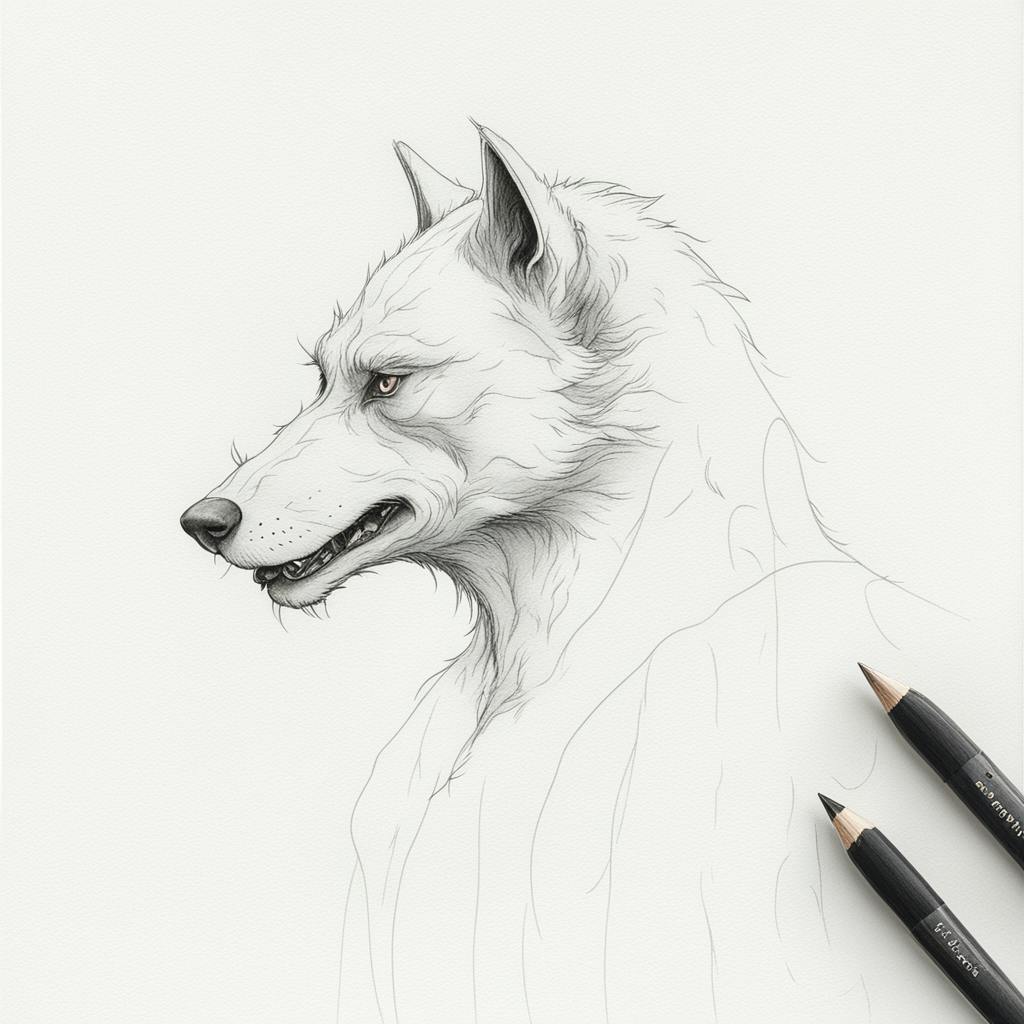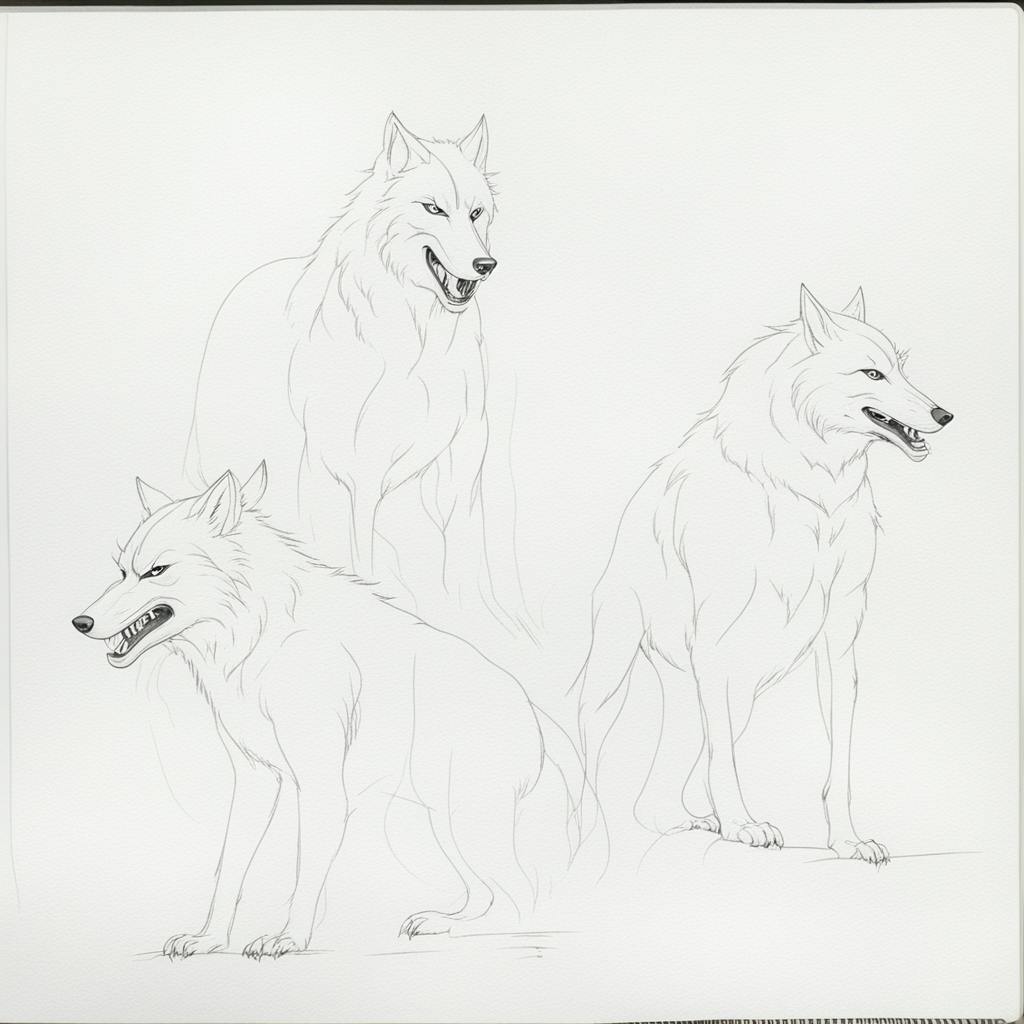An artist's skill lies in their ability to take the wildest of imaginations and breathe life into them on mere paper. In the realm of supernatural folklore, few figures are as compelling and remarkably beastly as the werewolf. Shrouded in mystery and imbued with a challenging complexity, capturing the essence of this folkloric creature is no small feat. This is where the art of pencil-drawn werewolf comes in - a skill that transforms the picture-perfect monster from the confines of supernatural lore onto tangible paper, allowing viewers to behold the beast in all its glory.
Pencil Werewolf Drawings
In capturing the image of the werewolf, an artist is inherently making a statement about the artistry itself. They dive into the deep abyss of folklore, layer their work with elements of horror and fantasy and ultimately showcase their prowess in illustrating these legendary beasts. The fusion of these elements lends their work not just an enchanting quality, but also profound depth, making every pencil-drawn werewolf a unique narrative infused with a heady blend of primal fear and morbid fascination.
Werewolf drawing requires an intimate understanding of specific techniques and principles that lend itself to a convincing portrayal of the legendary creature. The artist's stroke must be precise, their shading nuanced and their vision visceral. It is important to focus on the merging of human and lupine features to create a believable blend of men and monsters. Details such as sharp fangs, wolfish ears, a muscular physique, unkempt hair and a feral expression are the key elements to consider when crafting the perfect pencil-drawn werewolf.

AI made with Heather Crank
The importance of physical attributes in drawings
But the physical attributes are not the only things an artist must master. They also need to delve into the folklore that surrounds these creatures to give their drawings an authentic feel. By weaving into your work elements of gothic horror and pagan mythology, you can turn a simple drawing into a historical tale. Make use of moon imagery, woodland backdrops and symbols of transformation, all hallmarks of werewolf lore and legends, to bring out the richness of these creatures' narrative background.
The Pencilprone Tool
In this process lies the tool that is pencilprone. It's not just a technique, but a school of art that focuses on harnessing the subtle power of the humble pencil for an explosive impact. Pencilprone brings a richness and depth to drawings that can be otherwise challenging to capture. Whether you're sketching in soft lead or detailing in graphite, pencilprone offers a way to bring out the nuances in your work, capturing intricate patterns, fluid lines and intense shading that can provide your werewolf a visceral realism.
Mastering the art of pencil-drawn werewolves requires time, patienceand above all, a thorough understanding of both art and folklore. This fusion not only brings life to your sketches but also ensures a meaningful connection with viewers who can appreciate the thought and attention that has gone into every detail.

AI made with Heather Crank
Capturing the Essence of Werewolf Drawings
Creating a pencil-drawn werewolf is a journey of understanding the mythical beast and effectively bringing it to life with your artistic prowess. It is a disciplined process of not just drawing, but also capturing the essence of werewolf lore and legends, making the creature come alive on paper. It is a journey that starts from recognizing the beast in its entirety to defining it in simple strokes and shades, transcending the chasm between reality and folklore.
Remember that sometimes the most powerful tools are the ones you least expect - a humble pencil, fueled by the pencilprone technique, can bring nuanced depth, stunning realism and captivating narrative to your werewolf illustrations.
Summary of key points:
- Drawing a werewolf with a pencil is a fusion of artistic skill and a deep understanding of folklore.
- Key elements to consider are the mix of human and lupine features, such as sharp fangs, wolfish ears, and a muscular physique.
- Linking your drawing to werewolf lore such as moon imagery, woodland backdrops, and symbols of transformation can make the drawing more compelling.
- The use of the pencilprone technique, focusing on nuanced shading and patterning, can bring to life the intricacies of your drawing.
- Mastering the art of pencil-drawn werewolves involves time and patience, blending art and mythology for an impactful narrative.

